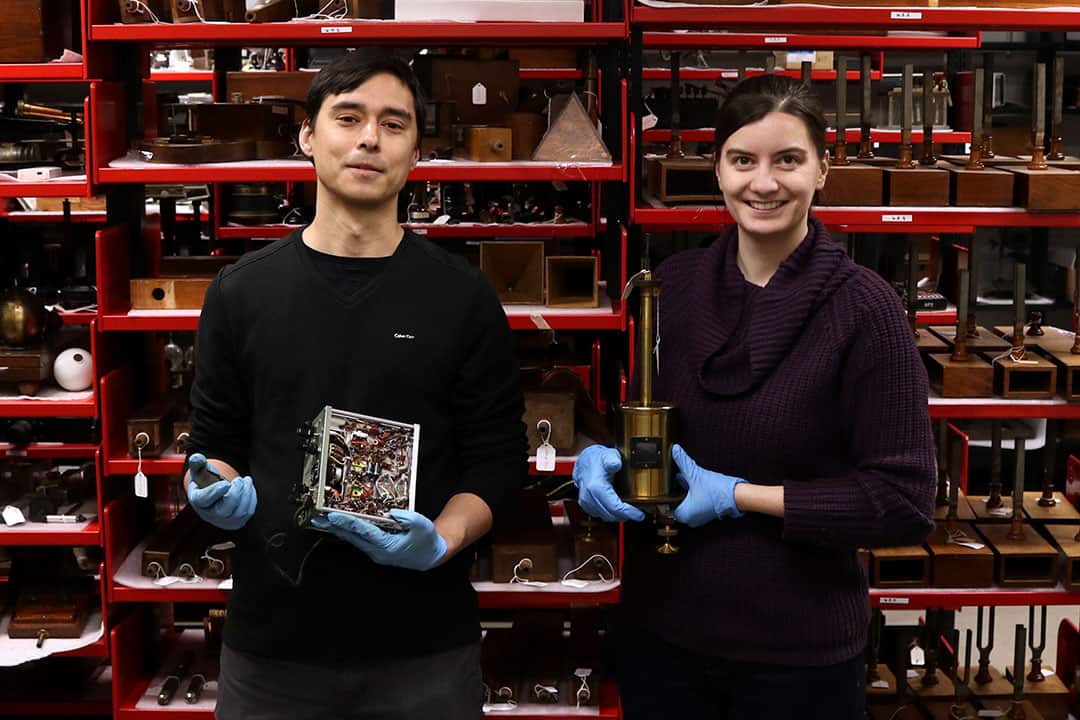A set of glass Rorschach slides the Department of Psychology once used for testing, a jar of preserved crayfish used to study the effects of acid rain, and a wooden box that opens to reveal a star-mapped globe. These are just a few of the many items that have been catalogued by the University of Toronto Scientific Instruments Collection (UTSIC) — a collection of scientific artifacts that preserve U of T’s science, technology, engineering, and medical material heritage.
The collection is based at the Institute for the History and Philosophy of Science and Technology (IHPST), but it also contains artifacts from various departments throughout the university.
Erich Weidenhammer, UTSIC curator and researcher at the IHPST, likens UTSIC to an archive of physical objects. “What we are is a material culture of… [the] research that goes on in the university,” said Weidenhammer. “So whereas you can read a text, you can also read an object [or] an artifact, and you can actually get a great deal of information off an artifact that you won’t get off a text.”
When Weidenhammer began work on the project in 2008, the collection was largely composed of donations made to the IHPST, which had been stored unlabeled in a department hallway.
Since then, the collection has been moved to a more permanent location, and many more artifacts have been acquired from departments all across the university.
A large part of that process involved not only connecting with different departments, but also explaining what constitutes a scientific artifact in the first place.
“Sometimes we approach different departments and they say, well, here’s our stuff from a hundred years ago,” said Victoria Fisher, PhD candidate at the IHPST. “But we’re interested in stuff from up to yesterday… because one day it will be… a hundred years old.”
Fisher recalled an insect-infested wood sample she gathered for the collection just minutes after a Faculty of Forestry graduate student finished analyzing it. It is this ongoing curation process that makes the collection so rich and extensive.
Fisher explained that without that kind of foresight, we may lose that bit of history.
“It’s important to get contemporary artifacts that will be interesting from the point of view of the future,” said Weidenhammer.
Furthermore, Fisher explained that sometimes the written record omits relevant information, such as the person who made the object or the technician who used it. “When you look at the material, these people are much more prominent.”
Recently, UTSIC curators have been digitizing the collection. Each artifact in the catalogue is given a detailed description and photographed meticulously, illuminating the tiny details that would normally only be visible to the person handling the object.
Weidenhammer and Fisher also spend a great deal of time ensuring that the online catalogue is accessible and user-friendly for researchers who may be interested in the collection but are unable to interact with the artifacts in person.
“Part of the methodology of material culture is engaging with an object, and… we felt that you can engage more profoundly with an object if you’ve got a really nice detailed picture,” said Weidenhammer.
Emily Deibert was employed by U of T’s Astronomy Library during the summer of 2017 and worked on moving and cataloguing the UTSIC astronomy collection.


